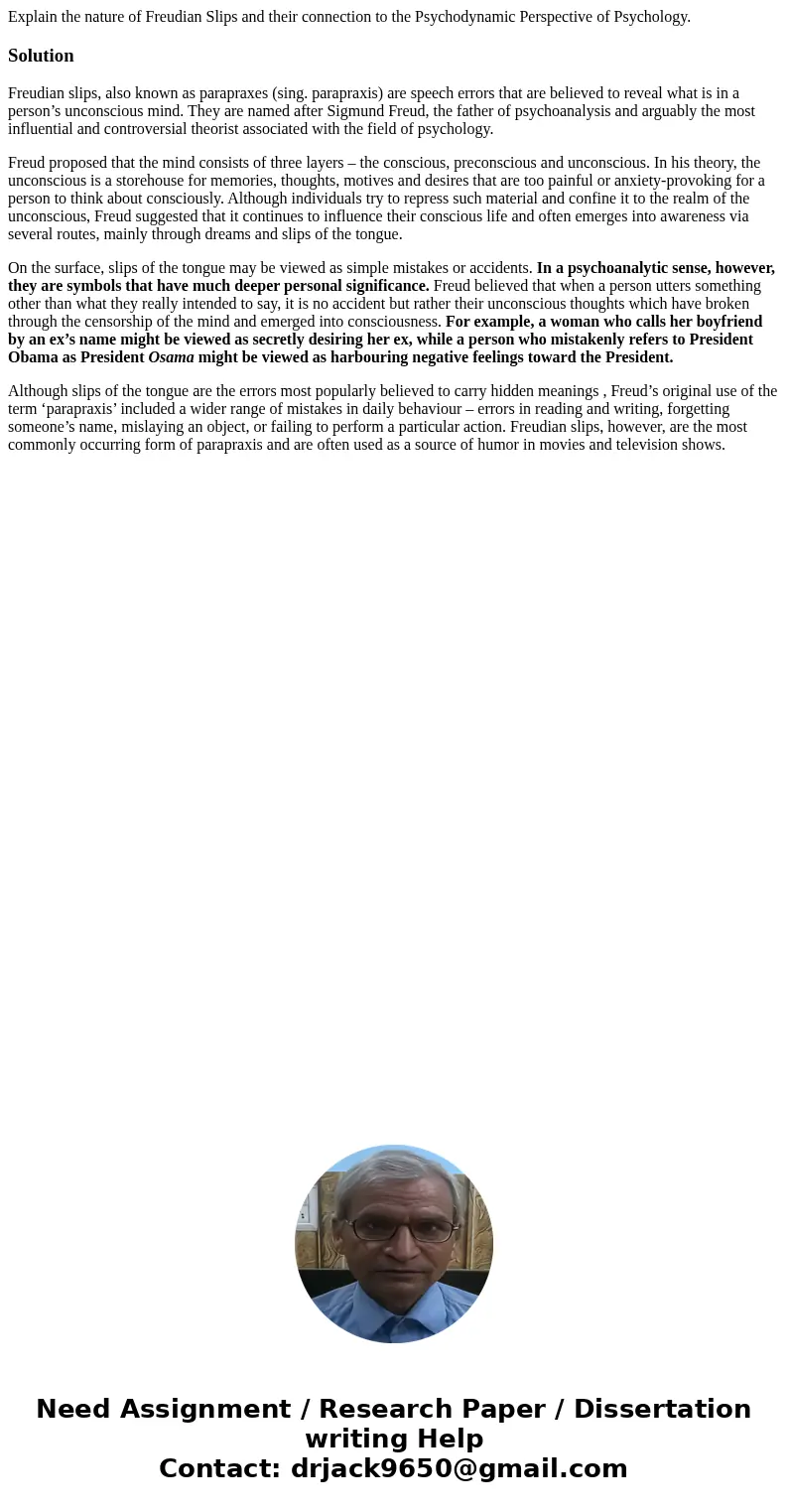Explain the nature of Freudian Slips and their connection to
Explain the nature of Freudian Slips and their connection to the Psychodynamic Perspective of Psychology.
Solution
Freudian slips, also known as parapraxes (sing. parapraxis) are speech errors that are believed to reveal what is in a person’s unconscious mind. They are named after Sigmund Freud, the father of psychoanalysis and arguably the most influential and controversial theorist associated with the field of psychology.
Freud proposed that the mind consists of three layers – the conscious, preconscious and unconscious. In his theory, the unconscious is a storehouse for memories, thoughts, motives and desires that are too painful or anxiety-provoking for a person to think about consciously. Although individuals try to repress such material and confine it to the realm of the unconscious, Freud suggested that it continues to influence their conscious life and often emerges into awareness via several routes, mainly through dreams and slips of the tongue.
On the surface, slips of the tongue may be viewed as simple mistakes or accidents. In a psychoanalytic sense, however, they are symbols that have much deeper personal significance. Freud believed that when a person utters something other than what they really intended to say, it is no accident but rather their unconscious thoughts which have broken through the censorship of the mind and emerged into consciousness. For example, a woman who calls her boyfriend by an ex’s name might be viewed as secretly desiring her ex, while a person who mistakenly refers to President Obama as President Osama might be viewed as harbouring negative feelings toward the President.
Although slips of the tongue are the errors most popularly believed to carry hidden meanings , Freud’s original use of the term ‘parapraxis’ included a wider range of mistakes in daily behaviour – errors in reading and writing, forgetting someone’s name, mislaying an object, or failing to perform a particular action. Freudian slips, however, are the most commonly occurring form of parapraxis and are often used as a source of humor in movies and television shows.

 Homework Sourse
Homework Sourse